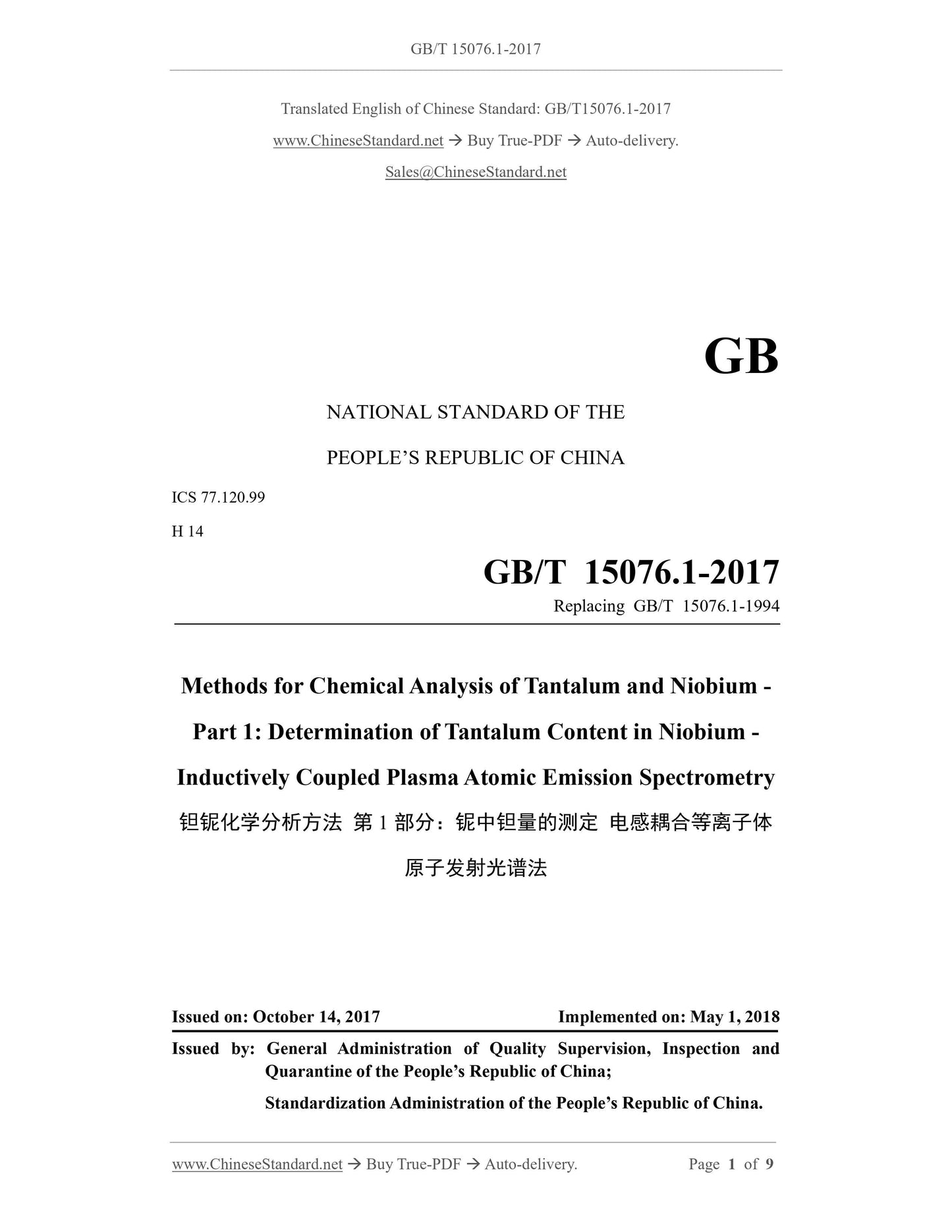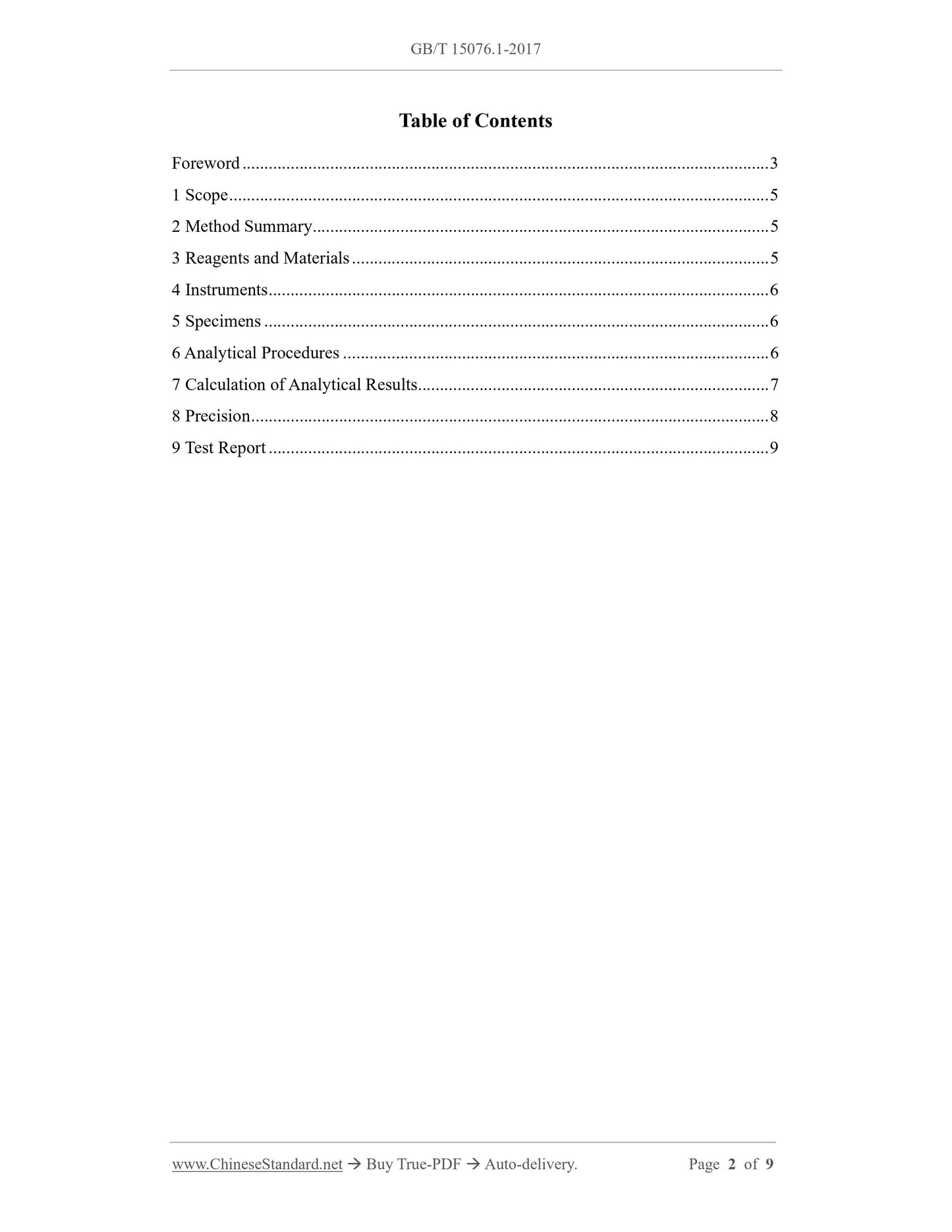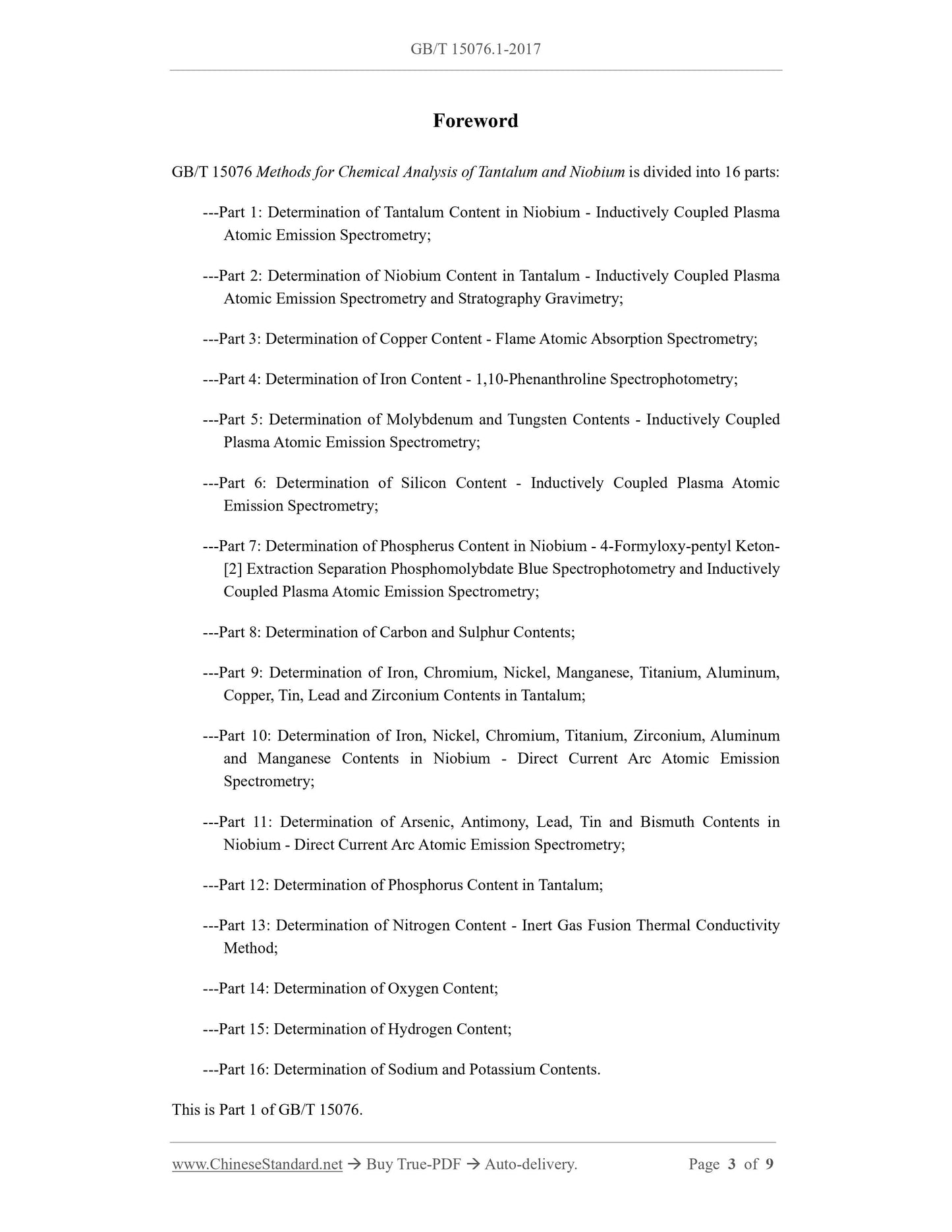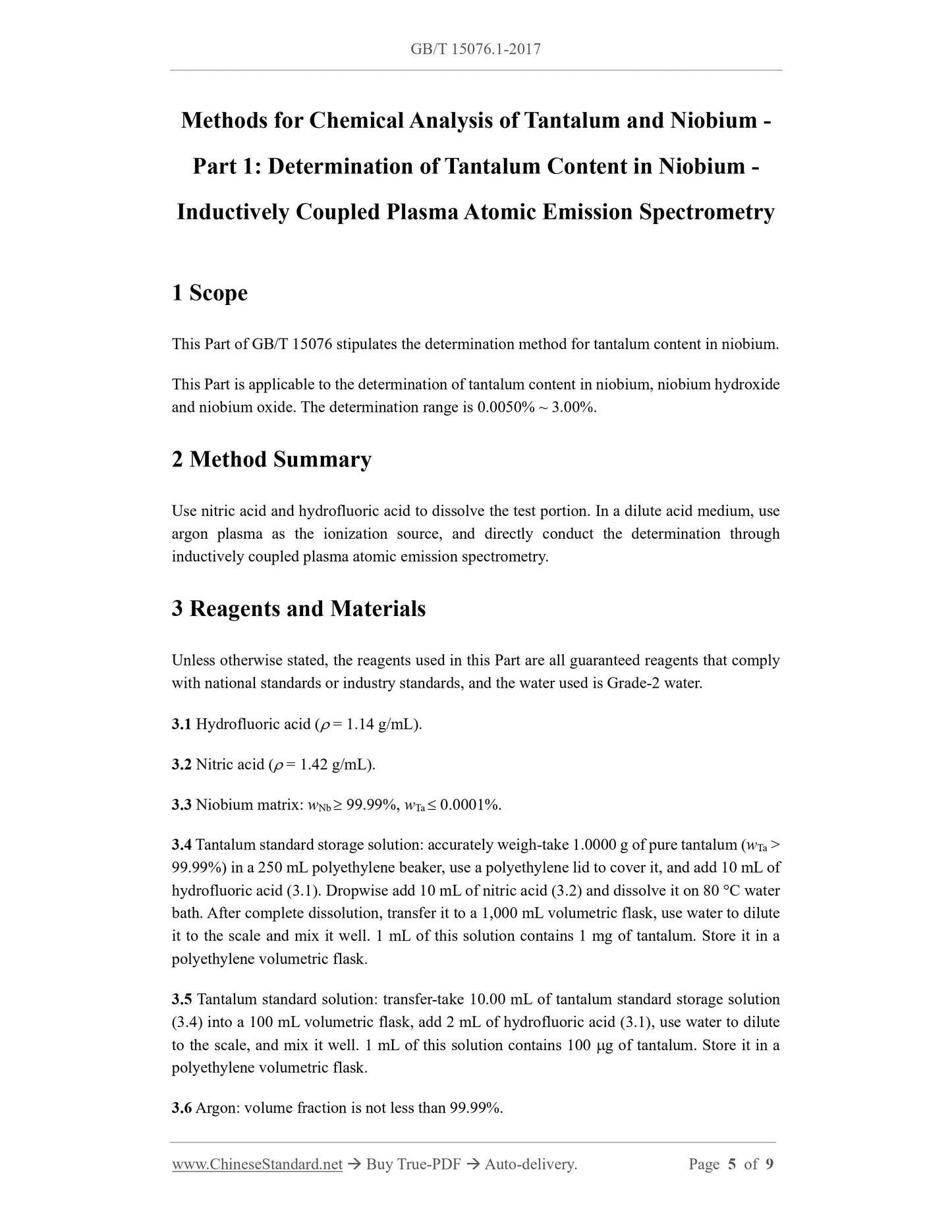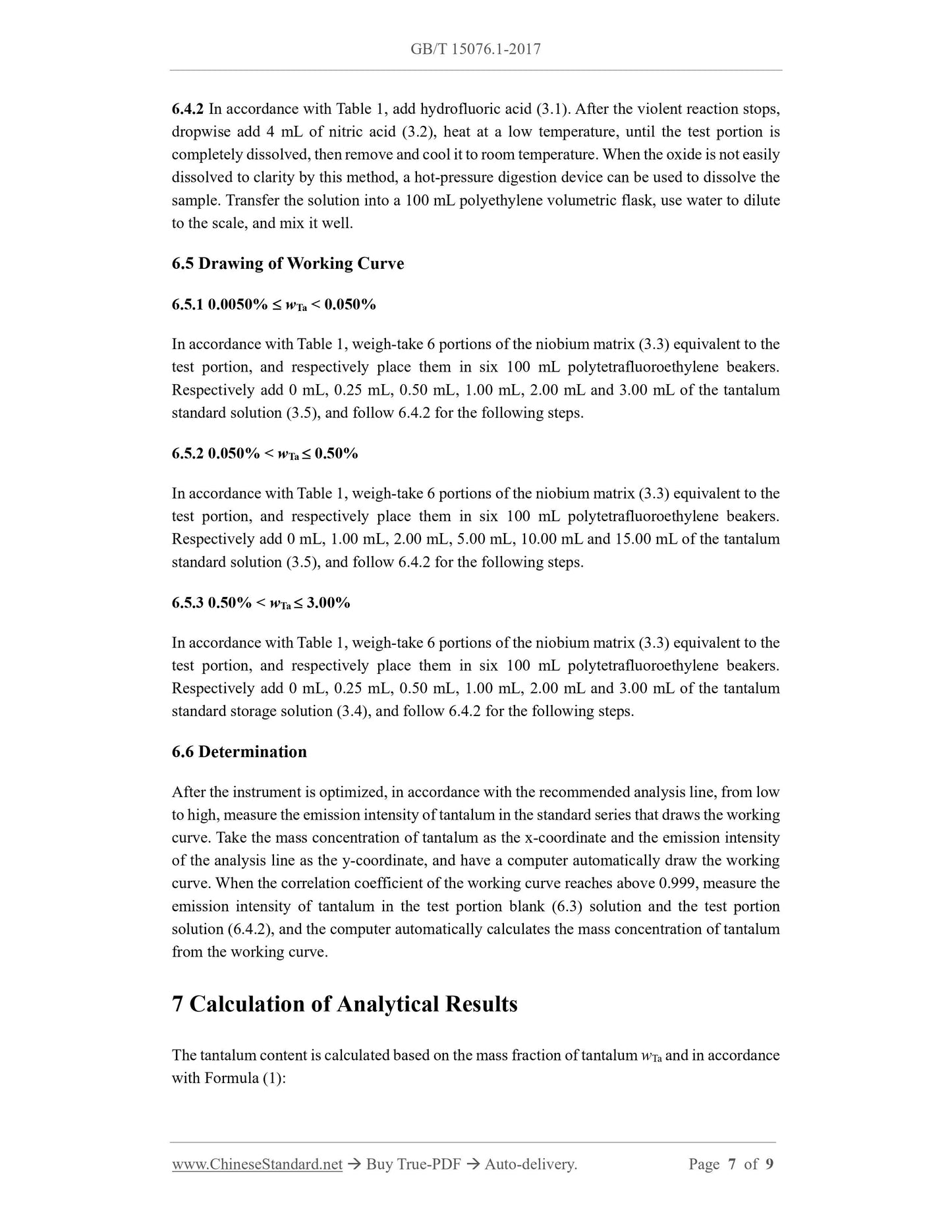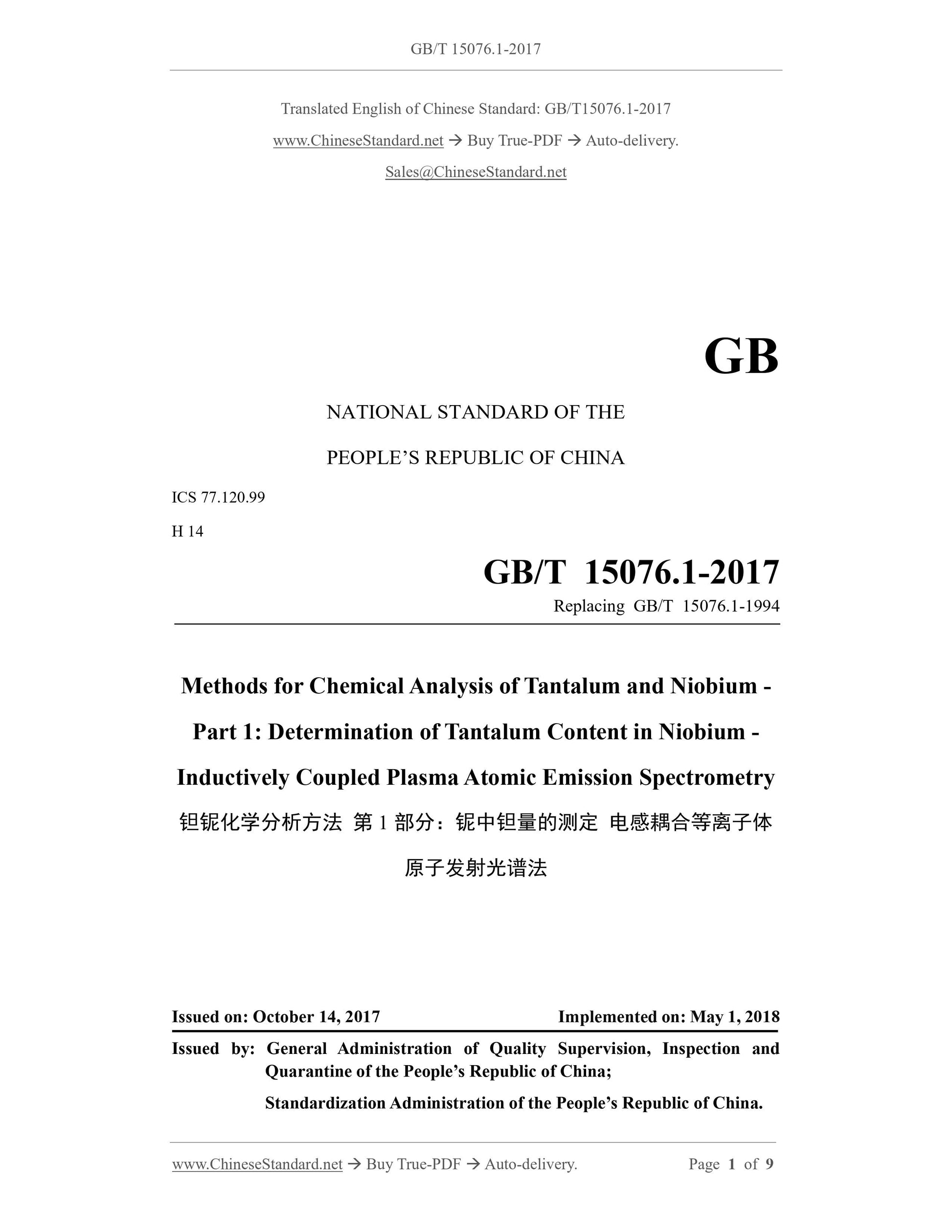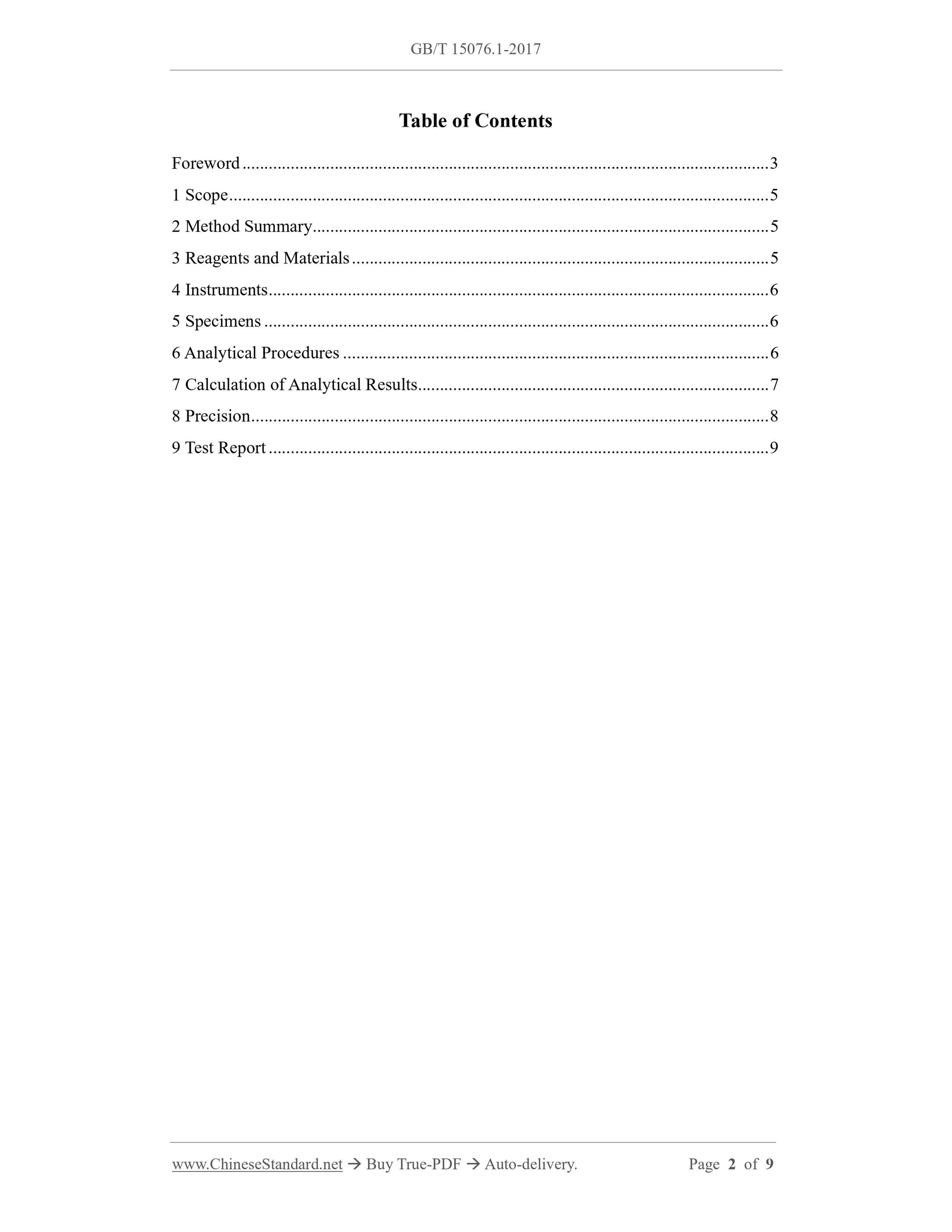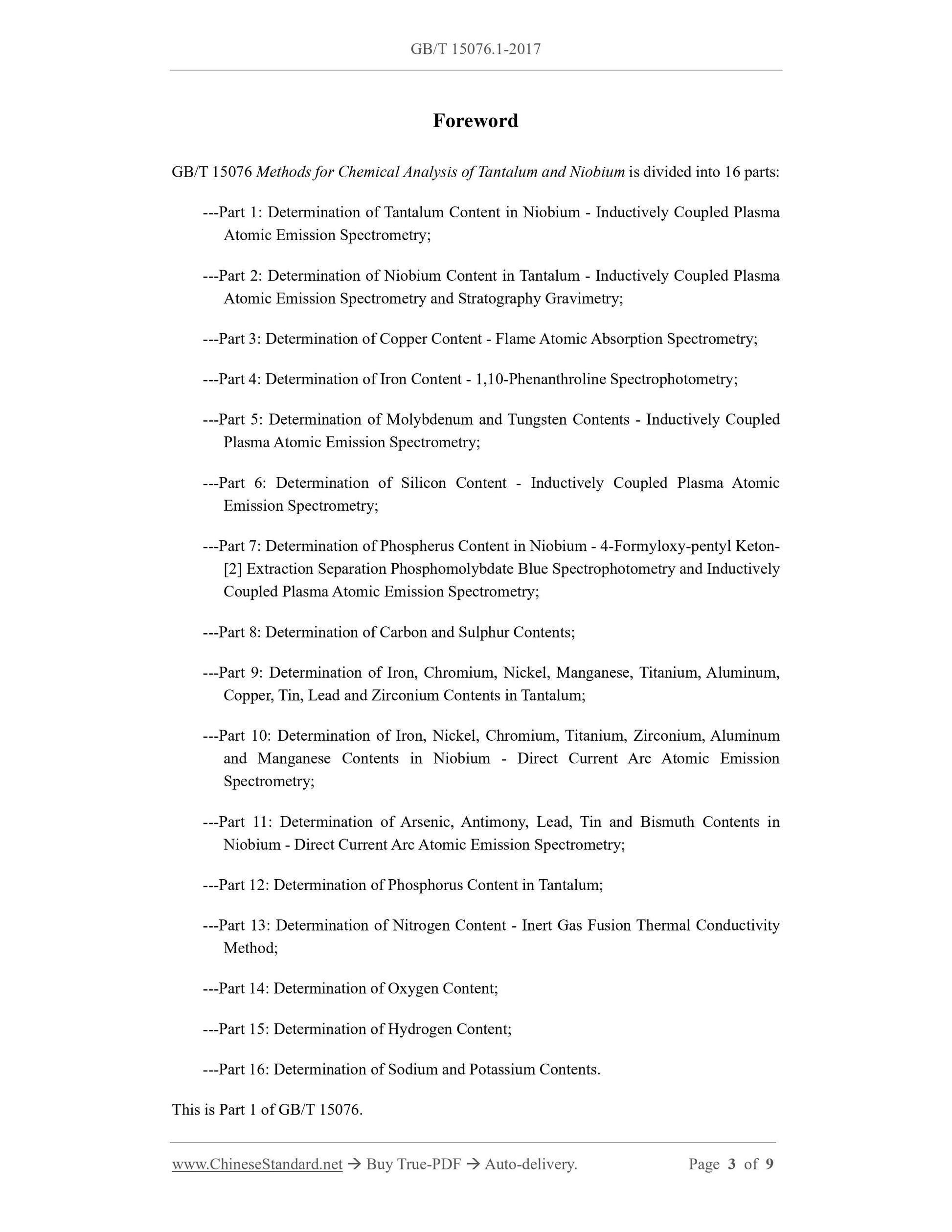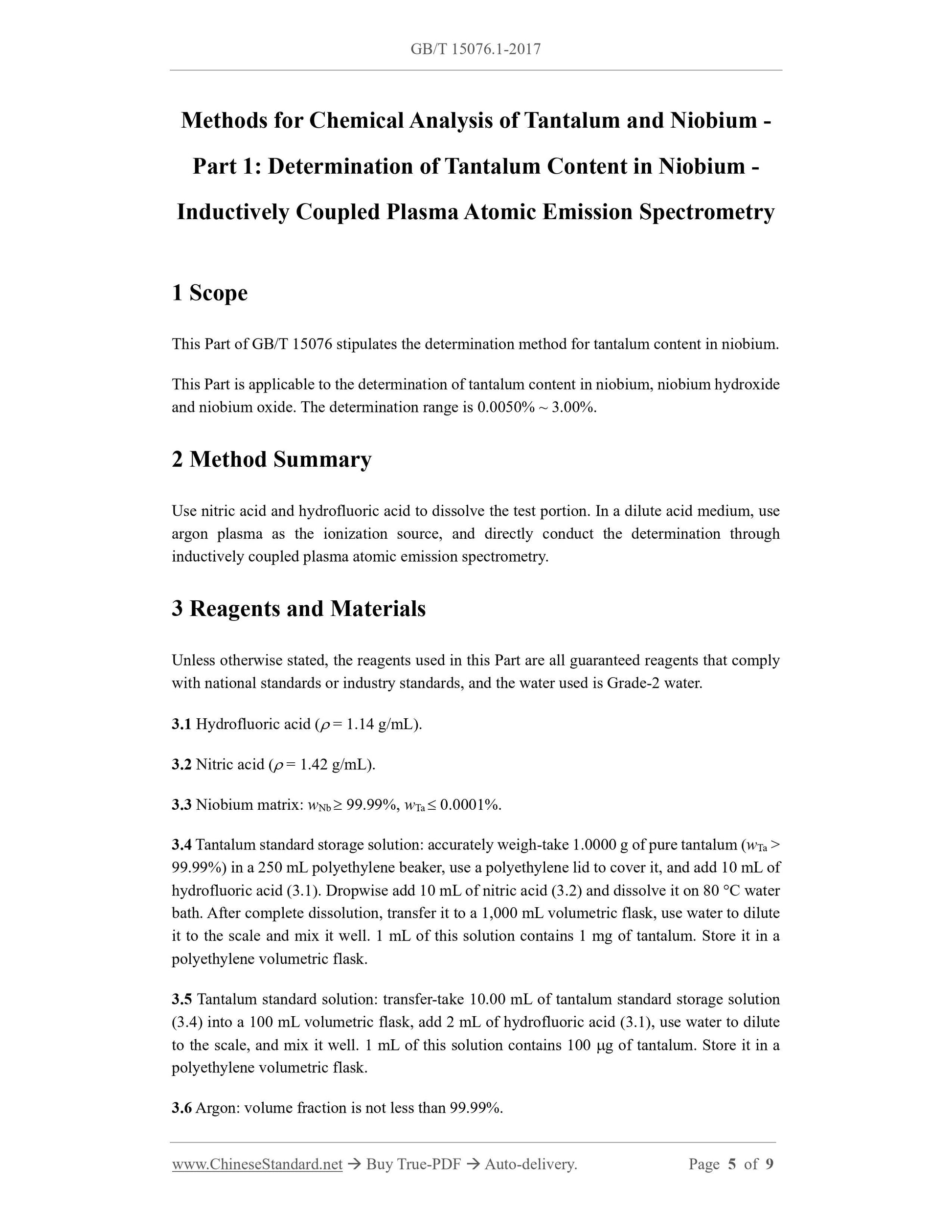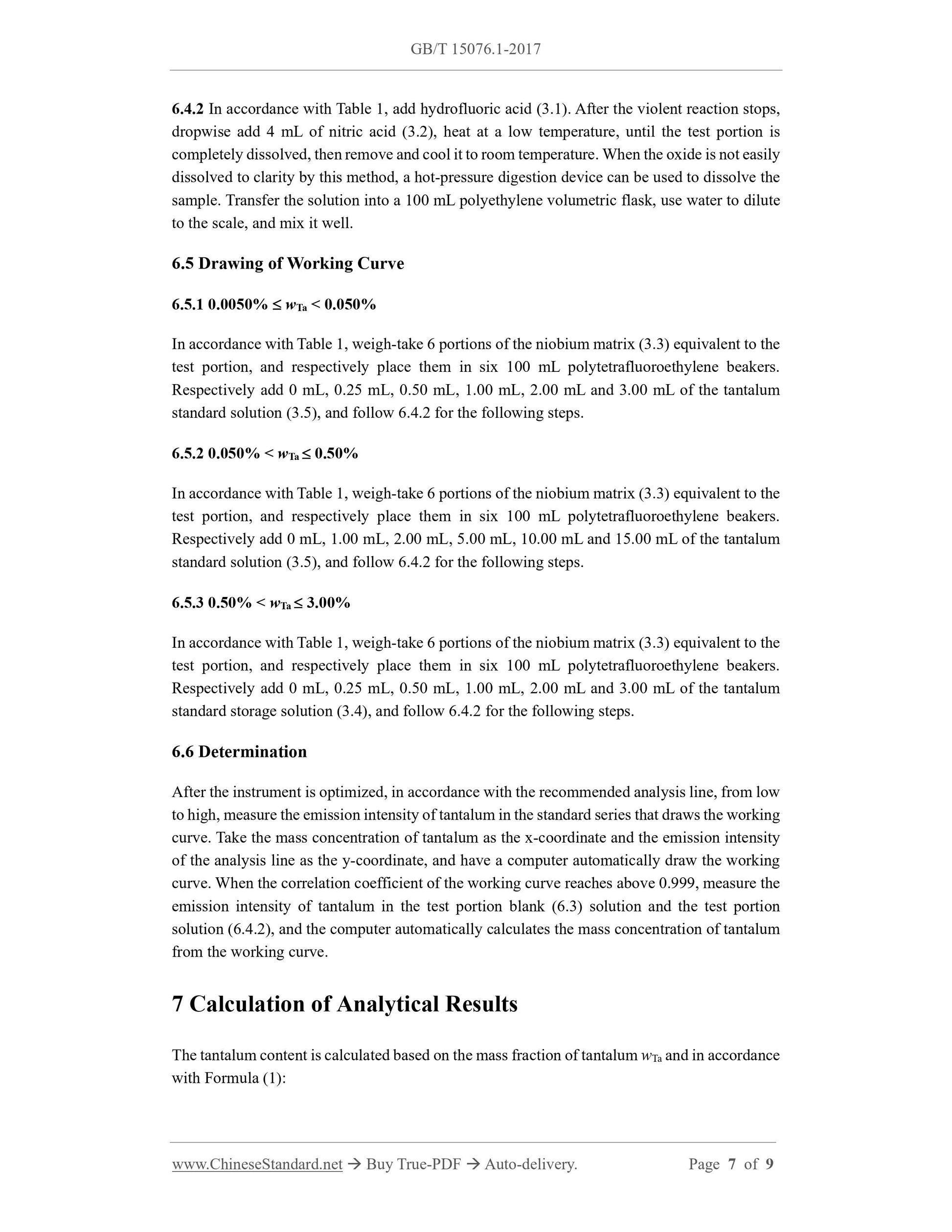1
/
of
5
www.ChineseStandard.us -- Field Test Asia Pte. Ltd.
GB/T 15076.1-2017 English PDF (GB/T15076.1-2017)
GB/T 15076.1-2017 English PDF (GB/T15076.1-2017)
Regular price
$105.00
Regular price
Sale price
$105.00
Unit price
/
per
Shipping calculated at checkout.
Couldn't load pickup availability
GB/T 15076.1-2017: Methods for chemical analysis of tantalum and niobium -- Part 1: Determination of tantalum content in niobium -- Inductively coupled plasma atomic emission spectrometry
Delivery: 9 seconds. Download (and Email) true-PDF + Invoice.Get Quotation: Click GB/T 15076.1-2017 (Self-service in 1-minute)
Newer / historical versions: GB/T 15076.1-2017
Preview True-PDF
Scope
This Part of GB/T 15076 stipulates the determination method for tantalum content in niobium.This Part is applicable to the determination of tantalum content in niobium, niobium hydroxide
and niobium oxide. The determination range is 0.0050% ~ 3.00%.
Basic Data
| Standard ID | GB/T 15076.1-2017 (GB/T15076.1-2017) |
| Description (Translated English) | Methods for chemical analysis of tantalum and niobium -- Part 1: Determination of tantalum content in niobium -- Inductively coupled plasma atomic emission spectrometry |
| Sector / Industry | National Standard (Recommended) |
| Classification of Chinese Standard | H14 |
| Classification of International Standard | 77.120.99 |
| Word Count Estimation | 6,624 |
| Date of Issue | 2017-10-14 |
| Date of Implementation | 2018-05-01 |
| Issuing agency(ies) | General Administration of Quality Supervision, Inspection and Quarantine of the People's Republic of China, Standardization Administration of the People's Republic of China |
Share
